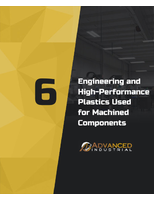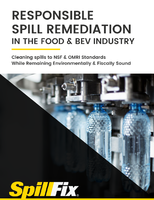Chromatography System automates LC method development.
Press Release Summary:
ACQUITY UPLC® H-Class Method Development System automates liquid chromatography method development according to Quality-by-Design guidelines. Fusion Method Development(TM) Software works with Empower 2 Chromatography Data Software and ACQUITY UPLC to design statistically valid experiments and automatically reconstruct them as fully ready-to-run sequences. Fusion uses resulting data to generate parameter-effects models which establish final design and operating spaces for truly optimized LC methods.
Original Press Release:
Waters New ACQUITY UPLC H-Class Method Development System Takes Automation to Higher Level
Combined with Fusion Method Development Software, the New System Produces Robust Methods Faster using Quality-by-Design Guidelines with Increased Chromatographic Flexibility
Milford, Mass. - Waters Corporation (NYSE: WAT) today unveiled its new Waters® ACQUITY UPLC® H-Class Method Development System that automates liquid chromatography method development according to Quality-by-Design (QbD) guidelines to produce robust, fit-for-purpose methods in dramatically less time than traditional processes. The superior performance of the new system stems from the power and integration of four class-leading components: ACQUITY UPLC H-Class; Fusion Method Development(TM) Software; Empower(TM) 2 Chromatography Data Software, and; Waters Method Development Chemistry Kits.
"The ACQUITY UPLC H-Class Method Development System combines industry-leading separation capabilities with cutting-edge, automated software and data management to consistently produce rugged, robust LC methods in a fraction of the time," said Warren Potts, Pharmaceutical Business Director for the Waters Division. "The chromatographic flexibility and power of Waters' recently introduced ACQUITY UPLC H-Class system is transforming modern method development as laboratories continue to adopt new UPLC methods and transfer older HPLC methods to UPLC. Now the integration of Fusion Software (S-Matrix) with ACQUITY UPLC H-Class has taken automated method development to entirely new levels of efficiency and productivity, thereby reducing costs and decreasing time-to-market."
The key to the ACQUITY UPLC H-Class Method Development System is its use of QbD-based methodology for LC method development, allowing scientists to develop the best possible method much faster and with greater confidence. Fusion works with Empower 2 and ACQUITY UPLC to increase lab efficiency by designing statistically-valid experiments and automatically reconstructing them in Empower 2 as fully ready-to-run sequences. Fusion uses the resulting data to generate parameter-effects models which establish the final design and operating spaces for truly optimized LC methods. With new features introduced on the ACQUITY UPLC H-Class such as multi-solvent blending, versatile column management options, and reliable Method Development Kits available in a variety of chemistries, the ACQUITY UPLC H-Class Method Development System's capabilities to ensure a quality method is developed the first time is unmatched.
To benchmark the effectiveness of Fusion Method Development Software used in combination with Empower 2 and ACQUITY UPLC, a large pharmaceutical company demonstrated that it was possible to reduce method development time for a complex drug product from 45-60 days to two days when compared to the conventional one-factor-at-a-time development approach.1 The ACQUITY UPLC H-Class Method Development System also addresses regulatory recommendations to incorporate robustness into LC method development (ICH Q2B Validation of Analytical Procedures - Methodology). Utilizing a patented approach built on sound statistical process control techniques, the Fusion Software computes and models the impact of key chromatographic parameters on method robustness. This enables identification of methods optimized for both mean performance and robustness without the need for any additional experiments. Establishing the final design space for a method in this manner creates the basis for flexibility and continuous improvement (ICH Q8(R2) Pharmaceutical Development).
Pharmaceutical organizations can standardize their approach to LC with this common technology platform that makes the future transition from HPLC to efficient UPLC-based methods straightforward and practical - from discovery through to product release testing. With additional tools such as Method Transfer and Method Validation Kits, seamless transfer from an HPLC to a UPLC, or vice versa, is ensured.
More information on the ACQUITY UPLC H-Class Method Development System is available on Waters web site: waters.com/method.
About ACQUITY UPLC (waters.com/uplc)
The ACQUITY UPLC family of systems eliminates significant time and cost per sample from analytical processes while improving the quality of results. By outperforming traditional or optimized HPLC, the system allows chromatographers to work at higher efficiencies with a much wider range of linear velocities, flow rates, and backpressures. UPLC Technology, which has been adopted successfully in laboratories around the world for the most demanding separations, is a highly robust, dependable, and reproducible system. What differentiates the system's holistic design is Waters' patented sub-2 micron hybrid particle chemistry, significant benefits over today's HPLC systems equipped with standard 5 micron particle chemistries.
About S-Matrix (www.smatrix.com)
S-Matrix Corporation develops advanced Design-of-Experiments (DOE) based software that automates R&D experimental work according to accepted Quality-by-Design principles and methodologies. Strategic business alliances with key industry and academic customers, analytical instrument, and process equipment companies enable S-Matrix to rapidly bring to market innovative Automated Experimentation techniques and software for targeted industry applications.
About Waters Corporation (www.waters.com)
For more than 50 years, Waters Corporation (NYSE:WAT) has created business advantages for laboratory-dependent organizations by delivering practical and sustainable innovation to enable significant advancements in such areas as healthcare delivery, environmental management, food safety, and water quality worldwide.
Pioneering a connected portfolio of separations science, laboratory information management, mass spectrometry and thermal analysis, Waters technology breakthroughs and laboratory solutions provide an enduring platform for customer success.
With revenue of $1.5 billion in 2009 and 5,200 employees, Waters is driving scientific discovery and operational excellence for customers worldwide.
1. A Quality-by-Design Methodology for Rapid LC Method Development, Part III. Ira Krull, Michael Swartz, Joseph Turpin, Patrick H. Lukulay, Richard Verseput. LCGC North America, April 1 2009




